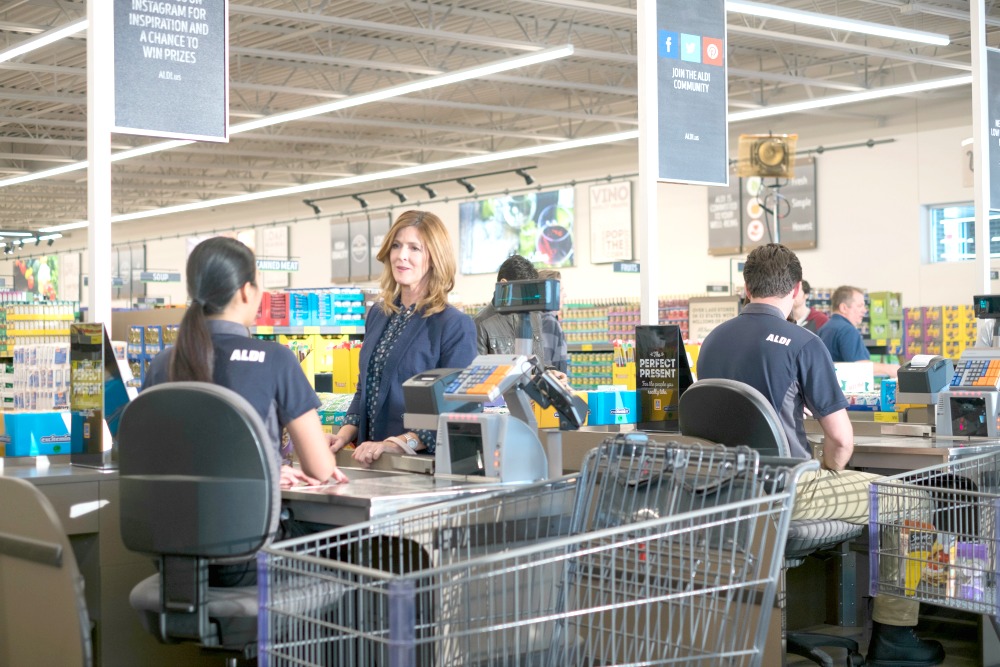Supermarkets aren’t a new concept. Lidl and Aldi are well-known self-serving stores that offer a wide range of products from furniture to foodstuff.
These German-based retail outlets run on the same principle but can be compared using different parameters. In this guide, you’ll learn about their similarities, differences and also get to know which is better.
Contents
- 1 ALDI vs LIDL History
- 2 Similarities Between Aldi and LIDL
- 3 Main Difference Between Aldi and LIDL
- 4 Is Aldi or LIDL Better for Meat?
- 5 Do Aldi and LIDL Use the Same Suppliers?
- 6 Are the Owners of LIDL and Aldi Brothers?
- 7 Pros and Cons of Shopping at LIDL
- 8 Pros and Cons of Shopping at Aldi
- 9 Our Verdict: Which Store Is the Best?
ALDI vs LIDL History
Aldi and Lidl are among the top supermarkets in the sector with a global presence and following. Based in Germany, both Aldi and LIDL are supermarkets with branches across Europe and the rest of the world, making them leaders in their market niche.
To start with, ALDI and LIDL are separate entities and not related. In addition, the families that own these two supermarkets aren’t related at all. They’re competitors who have a similar business model.
Aldi, Lidl, and Trader Joe’s are separate companies with no joint ownership. However, Aldi and Trader Joe’s have a shared family heritage.
ALDI History
Aldi, a short form of Albrecht Discounts, is owned by brothers Karl Albrecht and Theo Albrecht. This chain supermarket began in 1913 simply as a small store. However, due to irreconcilable differences in business management and operations, it split in 1960 into Aldi Nord, headquartered in Essen, and Aldi Sud, based in Mülheim an der Ruhr.
While Aldi Sud focused its business in Austria and Anglo-phone countries, Aldi Nord focused on Northern Germany and other parts of Europe. Currently, Aldi runs 11,235 stores globally.
LIDL History
Lidl, whose headquarters are in Neckarsulm, was formed in 1930. It, however, ventured into the supermarket business in 1977, modeling its business operations on Aldi’s. It’s part of the larger Schwarz Group, the world’s fifth-largest retail store. Currently, this discount retailer chain operates over 11,200 stores across Europe and the US.
Similarities Between Aldi and LIDL
While these supermarkets are unique in their own rights, there are apparent similarities worth noting.
1) Pricing Model
Frankly, both supermarkets run as budget chains in the countries they’re located, meaning that their prices are relatively low compared to other supermarkets. If you’re watching pennies where you can, these two supermarkets stand out as the best options for you.
2) Money-Back Guarantees
Both supermarkets have a refund policy on their private label products purchased from their stores. Suppose the shopper isn’t satisfied with or changes their mind after purchasing an item. In that case, they’re allowed to return the product and get the refund or replacement once they produce the original receipt as proof of purchase.
3) Bagging Policies
Both supermarkets have similar shopping bags for their customers. The supermarkets ask their customers to bring their shopping bags to pack their groceries. If one isn’t able to, one can purchase a shopping bag from the stores.
While at the stores, both supermarkets allow their customers to bag their groceries themselves. This has drastically reduced staffing for both supermarkets.
4) Display-Ready Packaging
To save on labor, both supermarkets display ready-packaged items on their shelves. In this method, case goods are directly put on the display without handling the unit packs. This way, the supermarkets can easily and quickly set up the boxes without perforating them, substantially reducing labor costs.
5) Brand Confidence
This confidence is evident in their refund policies. For instance, Aldi has the “Twice as Nice Guarantee” while Lidl has the “Love It Guarantee“. All these are clear evidence that the supermarkets have unmatched confidence in their products. In both cases, you can return your product after purchase if you aren’t satisfied with it.
6) Premium Product Lines
Both supermarkets have premium line services where you get premium products such as meats, gourmet kinds of pasta, and cheese. The net effect of this strategy is to ensure that customers get ‘exceptional value for money on high-quality products.
It’s is essential to note that other retailers use this strategy by raising the price for premium products to get a mark upon them.
While Aldi has a Specially Selected shopping option, Lidl has the Preferred Selection section.
Main Difference Between Aldi and LIDL
Yes, these two supermarkets look more like siblings than rivals. Even with these similarities, glaring differences set them apart and establish their identities.
Aldi vs Lidl: Prices
While both supermarkets pride themselves as low-cost retail chains, price differences stick out. Generally speaking, the market forces have pushed the supermarkets to focus on their pricing, leading to these noticeable differences. Overall, Aldi has been rated by customers as having slightly lower prices compared to Lidl.
Aldi vs Lidl: Customer Experience
Customer experience differs in various aspects. For instance, cashiers at Aldi can scan items faster at checkout because they are seated. This means customers don’t take long in the queue compared to Lidl, where cashiers serve while standing. Naturally, Lidl cashers get fatigued faster which can easily affect their service delivery.
Additionally, Aldi has a double conveyor belt arrangement that ensures customers can easily bag their shopping as the cashier scans them. If the shopper is slower, the cashier can scan another customer’s items.
Aldi vs Lidl: Products
Lidl has an in-house bakery that makes its items and delivers them to its customers. Aldi doesn’t have an in-house bakery. Also, Lidl has a dedicated counter where customers can purchase any amount of dry fruits regardless of the season. This isn’t the case with Aldi, where stocks are seasonal.
While Aldi occasionally sells frozen sushi at Aldi Find, Lidl offers sushi regularly to its customers.
Aldi vs Lidl: Location
Overall, Aldi covers around 11,235 stores all over its locations, while Lidl has about 11,200 stores. Aldi boasts of over 2000 stores spread in 37 states in the US alone, while Lidl has just 100 stores mainly located on the East Coast.
Aldi vs Lidl: Strategies
The supermarkets have different approaches to their marketing strategies. Lidl focuses more on promotional approaches using Everyday Low Price (EDLP) to promote non-foods. This is different from Aldi’s. Also, Lidl pursues producers whose products they need.
Aldi or LIDL for Quality
It’s no secret that shoppers find Lidl to have more quality products than Aldi, especially the private-label goods. Specifically, reviewers noted that Lidl products looked fresher than Aldi’s. This could be due to the availability of products all season round compared to Aldi, which can be a hit or miss most of the time.
Aldi vs Lidl: Online Shopping Experience
Both supermarkets offer online purchasing services. Aldi uses the Instacart app, while Lidl uses the Buymie app. Interestingly, Buymie promises to deliver groceries within an hour after placing the order. This is a good experience if speed is anything to go by.
Aldi vs Lidl: Size
Lidl stores are larger than the Aldi ones. While Aldi stores are 10,000 square feet, Lidl stores range between 14,000 to 21,000 square feet. With such space, Lidl can stock almost twice as much as what Aldi can carry.
Is Aldi or LIDL Better for Meat?
In terms of meat, Lidl stands out as supplying quality steak. Shoppers have shown Lidl meat preference as opposed to the Aldi one.
Do Aldi and LIDL Use the Same Suppliers?
No. First, Aldi uses a British-based buying team, which means all buying decisions are made from the UK. On the other hand, Lidl employs a pan-European buying structure. Secondly, almost 77 percent of Aldi’s products are procured from British suppliers who specifically design and package them for the UK market. At the same time, Lidl’s packaging is multi-lingual which makes it fit for the pan-European market.
Are the Owners of LIDL and Aldi Brothers?
No. The ownership of Lidl and Aldi has no relation. While it’s true that Aldi was once run by brothers who fell out and split the company, this has nothing to do with Lidl.
Pros and Cons of Shopping at LIDL
| Pros | Cons |
| Quality products | Slower customer service at checkout |
| Great customer experience | Tired staff due to the stand-as-you-serve policy |
| Readily available stocks | |
| Spacious stores | |
| Has an in-house bakery |
Pros and Cons of Shopping at Aldi
| Pros | Cons |
| Cheaper products | Smaller product range |
| Speedy service at the till | Lack of entertainment makes the shopping experience ‘boring’ |
| Promotions kept at a minimum | |
| Happy staff because they serve customers while seated |
Our Verdict: Which Store Is the Best?
Admittedly, both stores have strengths and weaknesses in equal measure. What you get at Aldi, you may miss at Lidl. All in all, your choice of which supermarket is the best depends entirely on your personal preferences and location.








Here in the UK, Lidl cashiers are seated.
I much prefer Lidl to Aldi.